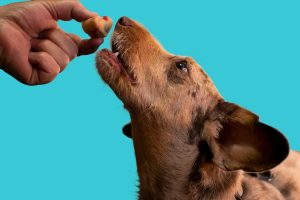We love our dog, right? We all do. Our dogs are the best. Our puppy is a snugly and adorable little pup. Our pet is always there to help us get through hard times and when we feel down. Dogs in our life make us laugh, brings us joy and happiness. They can even reduce stress and help with loneliness.
But sometimes, do we do too much? Do we spoil our dogs? Yes, you probably know the signs of a spoiled dogs.
Those are your dog sleeps in your bed, you feed him human food, he has his own wardrobe, you pay more for his salon bill than for your own, your dog thinks of you as a treat dispenser, and so on.
Today, however, I will talk about a different way we spoil our dogs and turn them into pampered pooches.
The spoiled dog syndrome
Let me start by saying the single biggest problem in dog training is giving too many food treats to your puppy. This is the danger lurking in continuous reinforcement. Your dog knows he just has to do the command you ask. It doesn’t matter how he finishes and how fast he finishes. Sometimes, we, as pet owners, are to blame.
Say, for example, you want your dog to come when called. Do you reward when your dog comes instantly to you and when he sniffs for 10 more seconds, and then comes? Has he completed the task at hand?
Well, if you reward both scenarios, you are spoiling your dog. And in time, his rate of responding and quality of dog behavior will drop off.
Even worse, if you do not have treats, your pooch will not do as you say. He will go on a strike. With too many treats, you lose power and control.
Another way pet parents might be spoiling their pet is fixed ratio and fixed schedules. What is that? Your dog learns that after you give him a treat, he needs to work more. Say, your fixed schedule for command is sit > lie down > sit > give paw > lie down.
Or five sit > come > sit. You will increase the speed of the command, but you will lose the quality. Your dog does the pattern. He learns the pattern. And you do not get a reliable dog.
If your dog learns he has to sit five times to get the treat, he will do it quicker but in lower quality. We exhibit similar behavior. Do you know that when you pay people on Friday, they usually work most on Wednesday, Thursday, and Friday?
How can you turn the tides?
So, how can you turn a spoiled dog into a reliable dog? Well, the trick is to make the response the reward. And make doing something the reward. You need to understand that your dog needs to be on your team. If he is your opponent, you can never win.
The trick to turning the spoiled dog into a well-behaved pooch with proper dog manners is random reinforcement.
How do you do that? You do not reward every behavior. If you reward 10 out of successful tries, I can bet half of the rewards will reward a below-average response.
Say you try 10 recall commands. And say your dog average response is 8 seconds. Your dog will come to you every time you hold a treat. But he will not come for the same time. Sometimes, he might come in 3 seconds. Others in 5 seconds. And sometimes, he might take it longer and come for 10, 12, 15 seconds.
Now, when you do not have a treat, your dog might not come (it happens more often than you think). You should not blame the dog. You have made him that way. It is your fault. When you reward below-average behavior, your dog knows he will get the reward eventually. And he might start showing bad behavior.
The trick here is to reward only above-average behaviors. This way, your dog learns to speed up to get the extra treats.
Another trick you can do is reward the dog on the third try. Rewarding him this way will continually improve his dog behavior. Why? Because he sees he doesn’t get a treat the first or second time. So he knows he has to be extremely good at the next try to get the reward.
Next, switch up the treats and rewards. For a better response, give him a better reward. And after a while, change the average good behavior and reward the dog accordingly.
How Many Treats You Should Give Your Dog?
While we are on the subject of dog training and dog food, let’s talk about treats. How many treats should you give your pets?
Yes, treats are part of positive reinforcement training. Most dogs are food-driven, and they work for food. If you have a toy-driven dog, do not worry. There is no limit on toys.
But if you give your dog too many extra treats, not only you will make them spoiled, but also disrupt their appetite for a regular meal. A spoiled puppy will not eat his dinner.
The general rule is treats should make no more than 10% of your dog’s daily calories and diet.
How to use food as treats?
A nice way to make sure you reward your dog and have him eat healthily is to change the way you give him dog food and treats. Make dog food like kibble rewards for his good behavior.
How do you do that? By hand feeding your dog. Hand feeding is a nice way to teach your dog to eat from your hand. And it creates a bond between. Bonus, you can teach your dog to work for his dinner.
If your pup is not much motivated by his regular food, you can still add treats. For example, mix the food with a few pieces of stinky cheese or salami. This way, the food smells different. And your puppy will go nuts for it.
And if your pets are on a wet diet, here is a simple recipe. Just spread the food on a cookie sheet and bake it until it gets dry enough. Chop it up and use it as treats.






